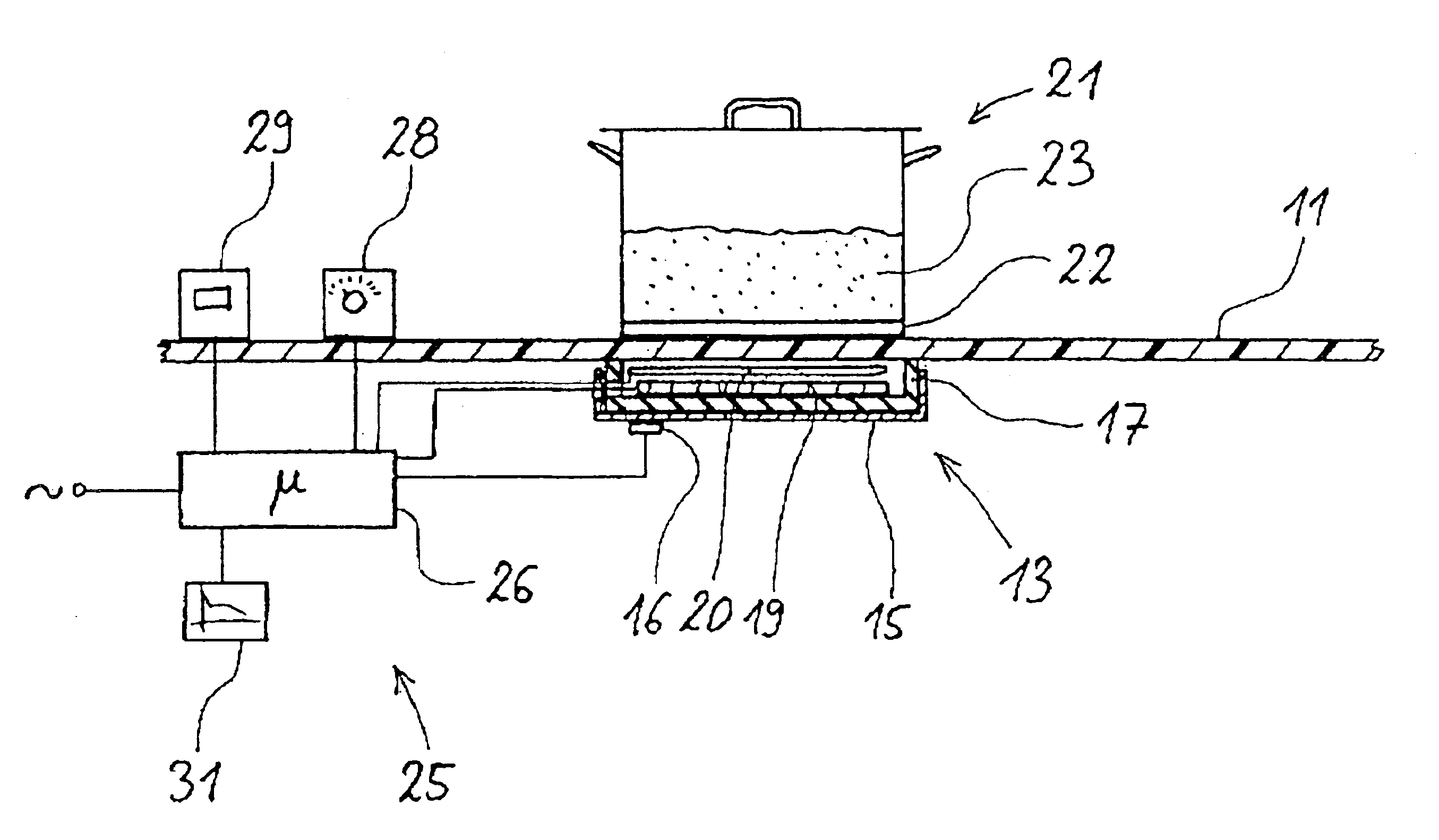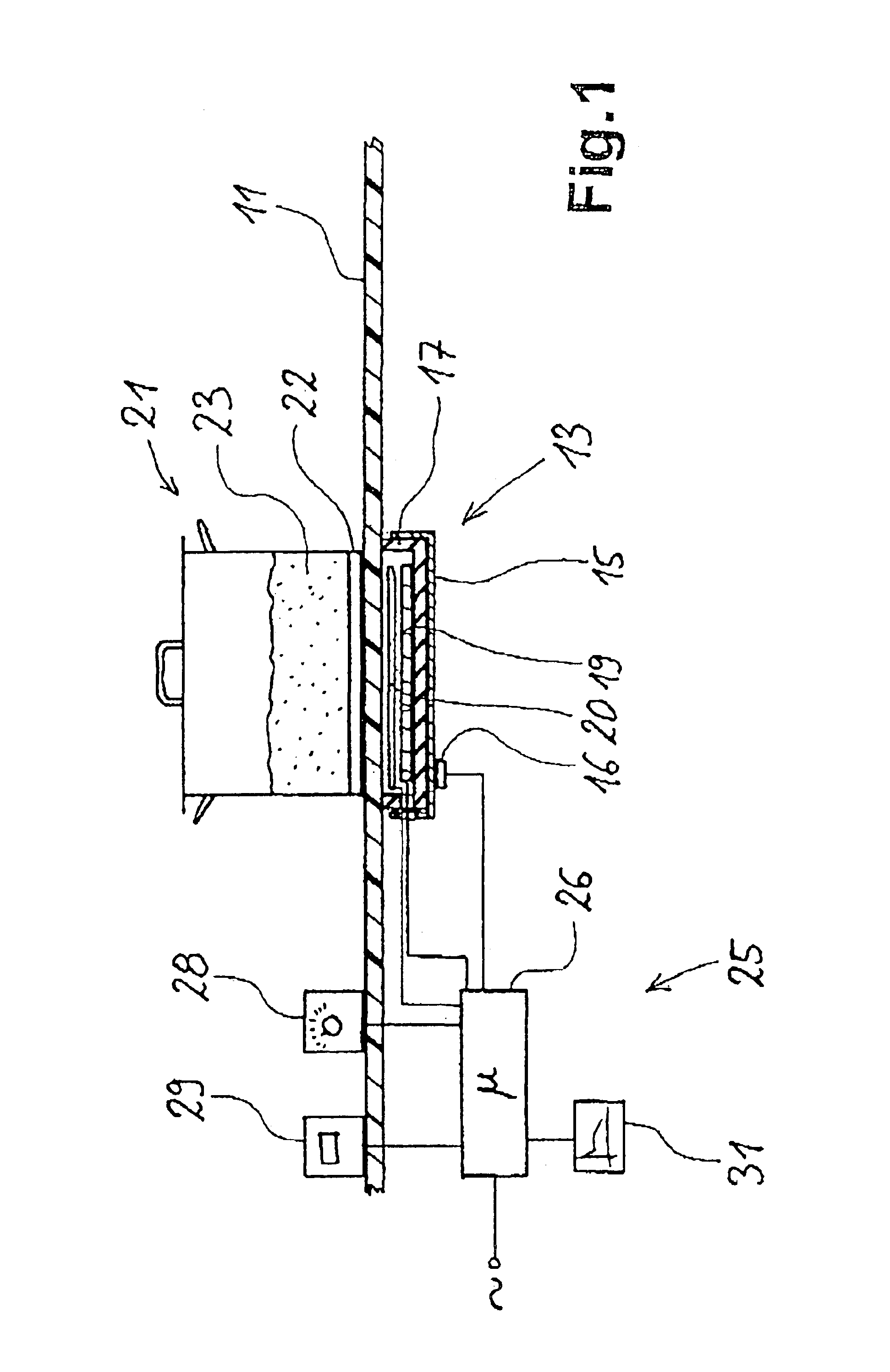Method for measuring the temperature of a metal saucepan
- Summary
- Abstract
- Description
- Claims
- Application Information
AI Technical Summary
Benefits of technology
Problems solved by technology
Method used
Image
Examples
Embodiment Construction
[0025]The diagrammatic FIG. 1 shows a glass ceramic cooking area 11. Below a hot point of the glass ceramic cooking area 11 is located a radiant heater 13, which is in principle constructed in known manner. In a sheet metal dish or tray 15 is inserted a flat, also dish or tray-shaped insulator 17, on which is located a heating coil 19. It is also possible to embed a heating coil 19 in the insulator 17. From below the radiant heater 13 is pressed onto the underside of the glass ceramic cooking area 11, which can e.g. take place by not shown retaining means.
[0026]Directly above the heating coil 19 is provided an induction coil 20 which, as described, can have a differing construction and can e.g. have a single turn.
[0027]Above the radiant heater 13 a cooking vessel or saucepan 21 is placed on the glass ceramic cooking area 11. By means of the radiant heater 13 energy is coupled into the saucepan bottom 22, which for this purpose has a ferromagnetic construction. As a result of the hea...
PUM
 Login to View More
Login to View More Abstract
Description
Claims
Application Information
 Login to View More
Login to View More - R&D
- Intellectual Property
- Life Sciences
- Materials
- Tech Scout
- Unparalleled Data Quality
- Higher Quality Content
- 60% Fewer Hallucinations
Browse by: Latest US Patents, China's latest patents, Technical Efficacy Thesaurus, Application Domain, Technology Topic, Popular Technical Reports.
© 2025 PatSnap. All rights reserved.Legal|Privacy policy|Modern Slavery Act Transparency Statement|Sitemap|About US| Contact US: help@patsnap.com



